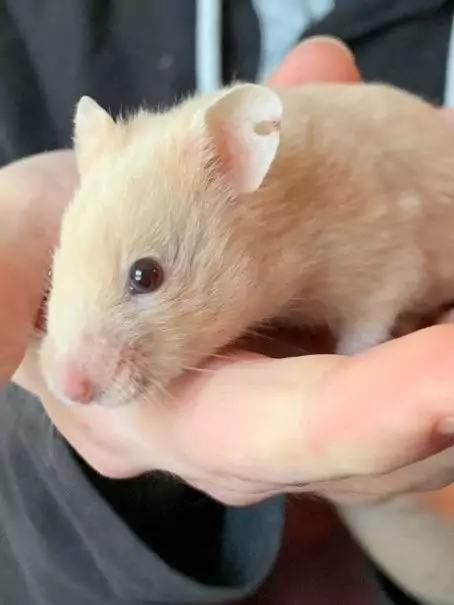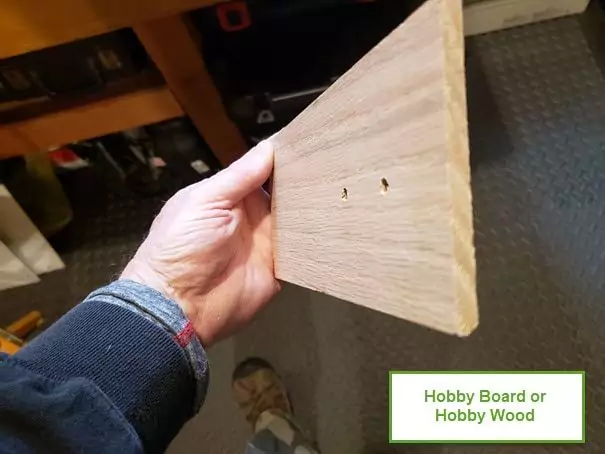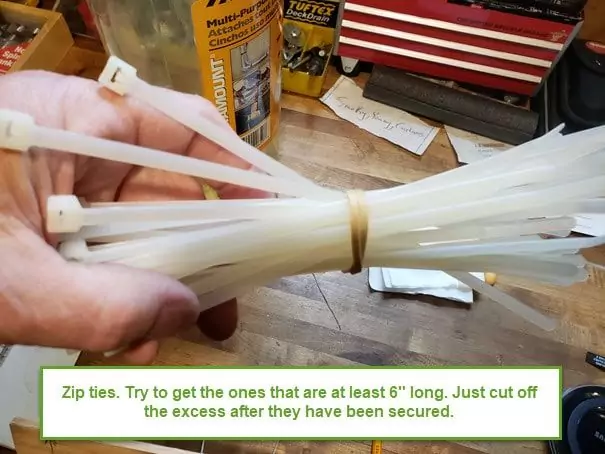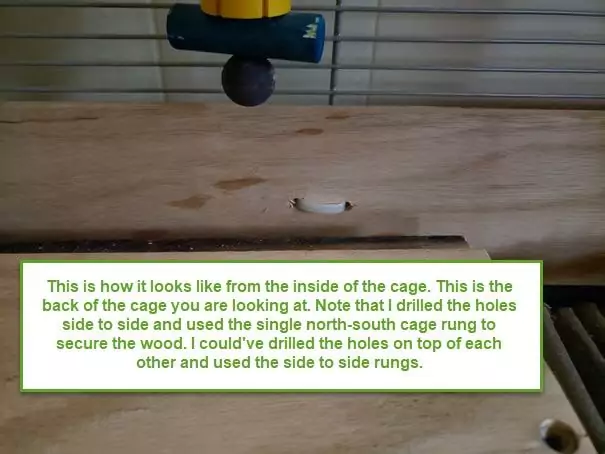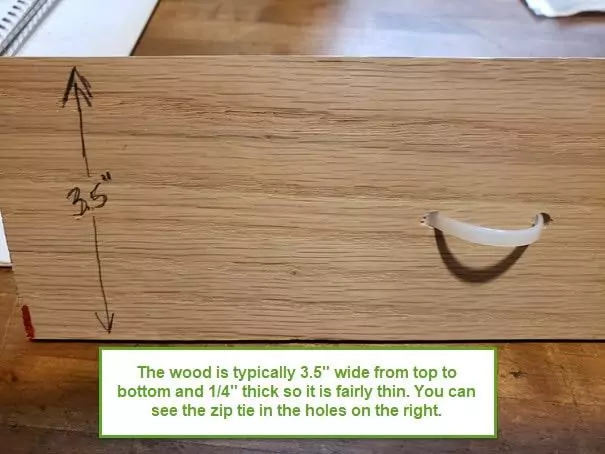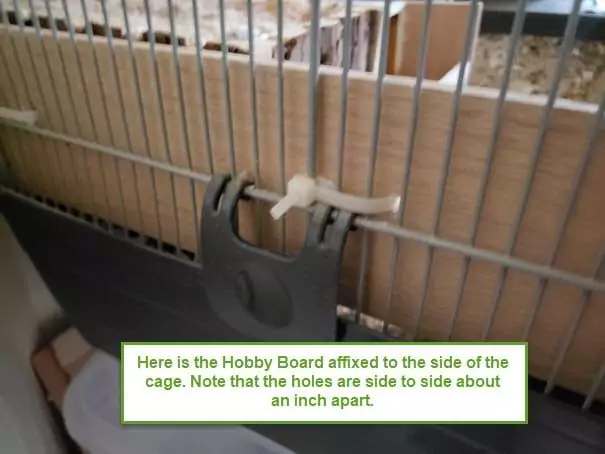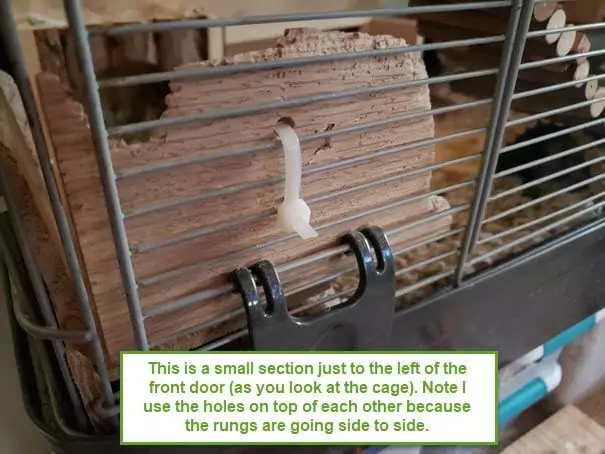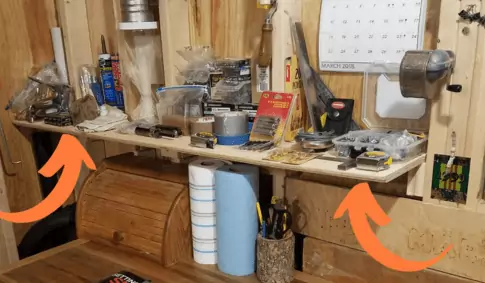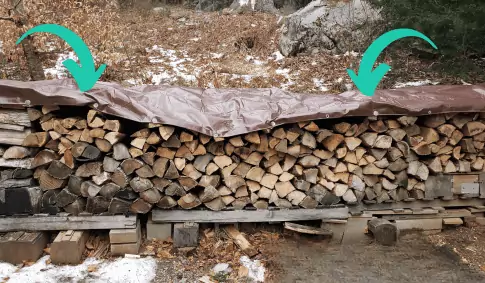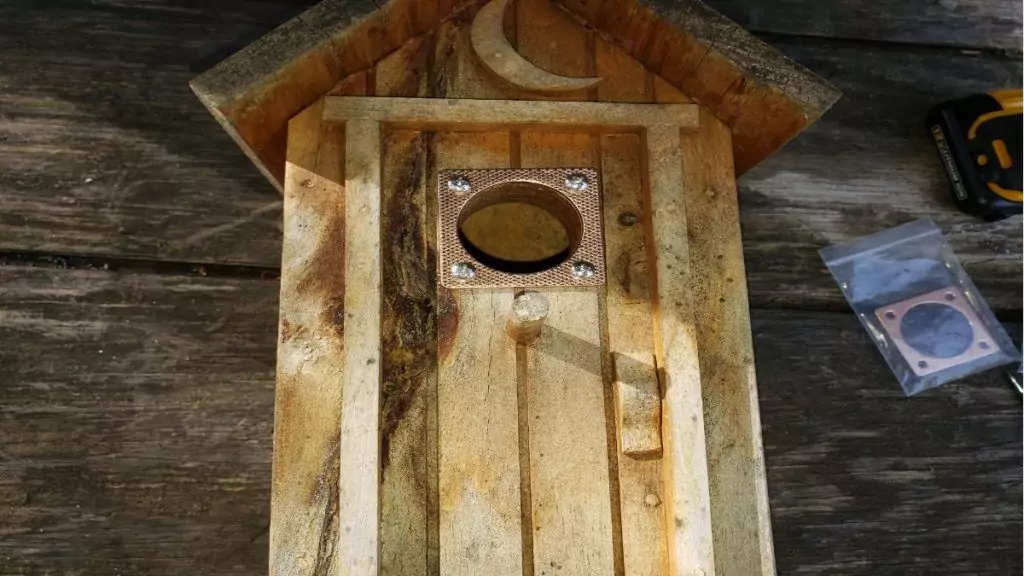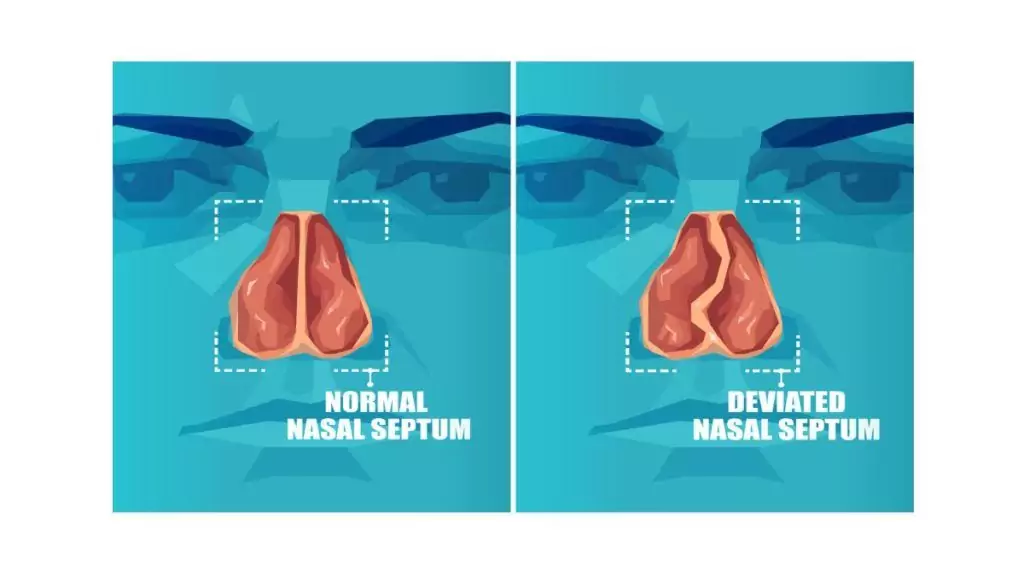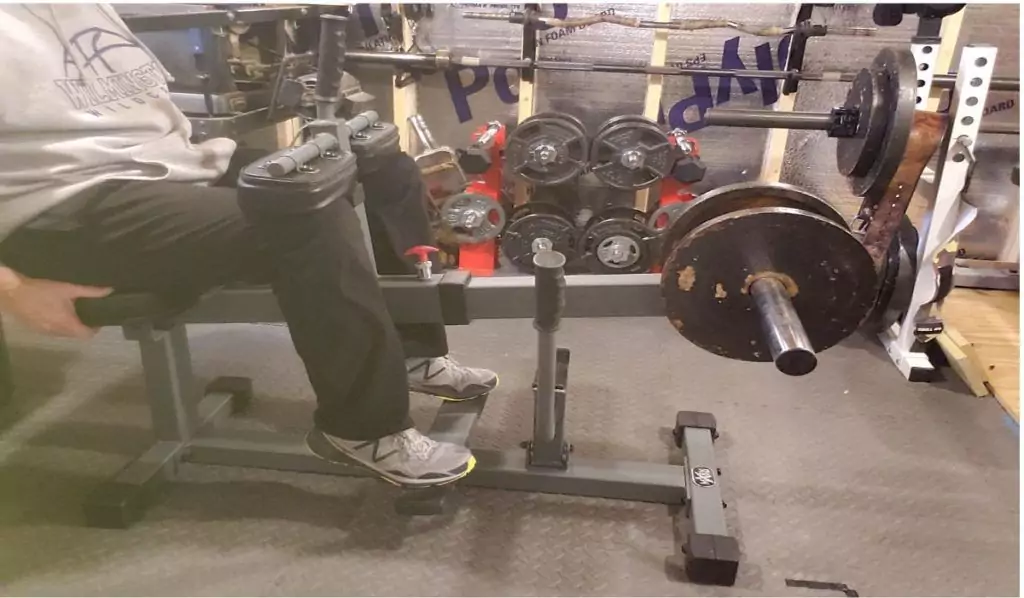As an Amazon Associate we earn from qualifying purchases.
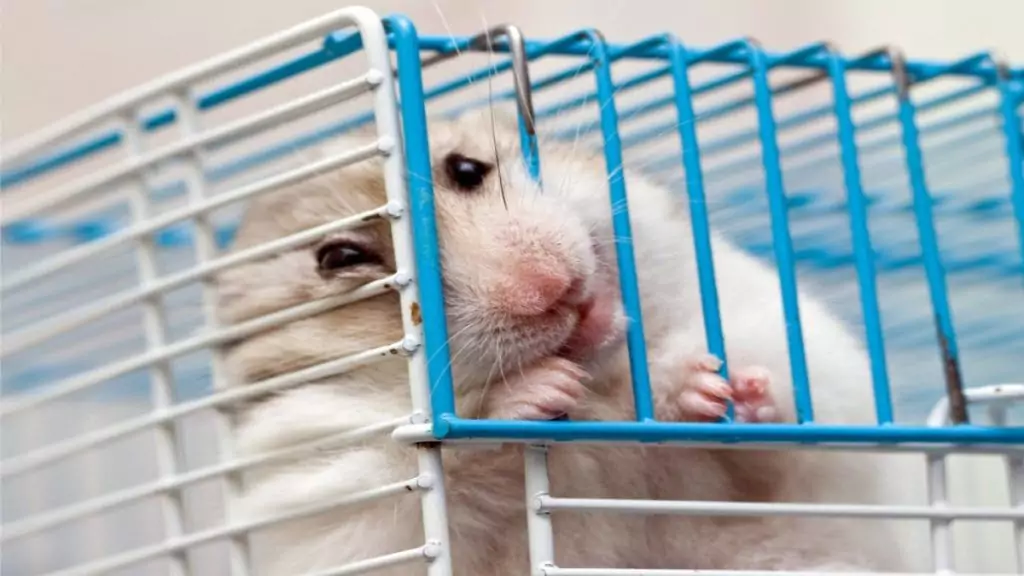
If you own a hamster that lives in a metal cage, the issue of bar biting or bar chewing of a cage can be one that plagues you. Believe me, I know all about it. I own 1 year old female Syrian hamster and I had this issue when she was a little younger.
BUT, I solved the issue and came up with a solution on my own that I really haven’t seen anywhere on the internet. Don’t miss my YouTube video at the end of this article!
My Hamster Biting Cage Bars Solution
I’m not saying that the solution I’ll be presenting hasn’t been published somewhere but I’ve never seen it. I can honestly say that I came up with this solution on my own.
It requires a very little bit of DIY skills and some basic tools but even if you don’t have the tools I’m sure you could find someone that could help you out. If you are still living at home maybe your mother or father has these basic tools and they could help you out.
It is my guess that you could find someone that could help if you don’t have these tools yourself.
So, to give a little background, I’ve read and watched youTube videos about what others have suggested.
Some suggestions were to cover the area that your hamster is biting on with lemon or lime juice. I even read to use olive oil.
The reason I don’t like these ideas is because I simply don’t want my hamster to ingest anything that could harm her.
It’s not worth it to me. I would never run that risk.
Other suggestions were to make sure that you have a lot of chew toys in the cage.
Well, I have a number of chew toys in my hamster’s cage but that didn’t seem to help.
Other obvious suggestions are to change to a bin cage or an aquarium which do not have metal bars.
Also, an upgrade to a cage like the Ikea Detolf would also solve the problem or to an aquarium or bin cage. But most of us have already paid for a cage that we like for our hamsters. Mine is a Prevue 528 and I like everything about the cage and I’m not about to change.
I like woodworking so I am always working on some DIY project or another with my wife. One thing we did a few years ago is replace our countertops with a material called hobby board or hobby wood. I think it’s called different names in different big box stores. It is basically wood that is cut very thin to ¼” width and is typically sold in 3.5” high and various lengths. You can see it below.
Believe it or not, this wood worked perfectly for us when it came to upgrading our countertops.
For short money we were able to have a brand new kitchen countertop that has lasted many years.
Anyway, I had a bunch of leftover Hobby Board from that project so I got to thinking.
Why can’t I attach some of this wood to the areas of the cage where my hamster was biting? Then hopefully, instead of bar biting or bar chewing, she would bite on the wood (I purchased the hardwood version, specifically oak) which would actually be good for her teeth.
I would steer away from any of the soft woods like pine or cedar as they have oils/resins within the wood that could hurt a hamster. They also would tend to splinter much more easily than a hard wood which could maybe cut the inside of the hamster’s mouth.
So I then had to figure out how to attach the wood to the cage? So I went out into my workshop and saw a container of zip ties. I figured if I drilled 2 holes in the Hobby Board (either side-to-side or on top of each other depending on the cage rung configuration) I could string the zip tie through the holes and also through the cage rungs.
Then when I pulled on the zip ties they would tighten the wood to the cage. It worked perfectly!
Here are the zip ties that I had. I would get the ones that are about 6” long like the ones below.
Steps to Prevent a Hamster from Bar Biting
1. Identify where your hamster is biting the cage. What I have noticed is that there are some sections of the cage that she was constantly biting on.
2. Estimate how long you want the board to be. If you want to cover the whole back of the cage (just above the plastic bedding area), just use a tape measure and measure the length of the back of the cage. Here is the first piece of wood I added to my Prevue 528 cage because this was the area that Cooty was biting on. Once I added this wood she just moved onto the side of the cage to bite on the metal so I had to add wood to the side as well.
3. Once you have identified how long the wood should be, you should cut the Hobby Board to that length. If you don’t have any saw available when you buy the wood at a big box store they will cut the wood to length for you or you can use the cutting stations that they have available to the public.
4. Now you should hold the wood up to the cage and if the rungs are running side to side (like on the back and front of the Prevue 528) you should make marks one on top of the other. This is where you are going to drill your holes. I would leave about an inch or two in between the marks. If it is a piece of wood longer than say 6” I would have 2 marks on one side of the board and 2 marks on the other side because you’ll be using 2 zip ties to secure the wood.
5. Then you would drill holes (I found 3/16” drill bit worked well for me) where you made the marks. Here is what a piece of the Hobby Board would look like with the holes drilled and the zip tie fished through the holes. You just need to ensure that the holes are big enough for the nylon zip tie to pass through. As I just mentioned a 3/16” drill bit worked perfectly for me.
The image above would be what you would see from the inside of the cage. The example above would work when the rungs of the cage are running north-south like on the sides of the Prevue 528 cage that I own.
6. String the zip ties through the holes and through the rungs of the cage. You’ll see what it looks like below:
I just cut the ends of the ties off as you can see above after I pull it tight. With the board above I have another set of holes all the way to the left.
The image below shows a piece of wood where she ended up biting on the wood instead of the cage. Once she started biting on the wood she stuck with the wood because that’s what she preferred!
Here is another section on the side of the cage that she was bar chewing. Once again, once she started biting on the wood she just kept biting the wood!
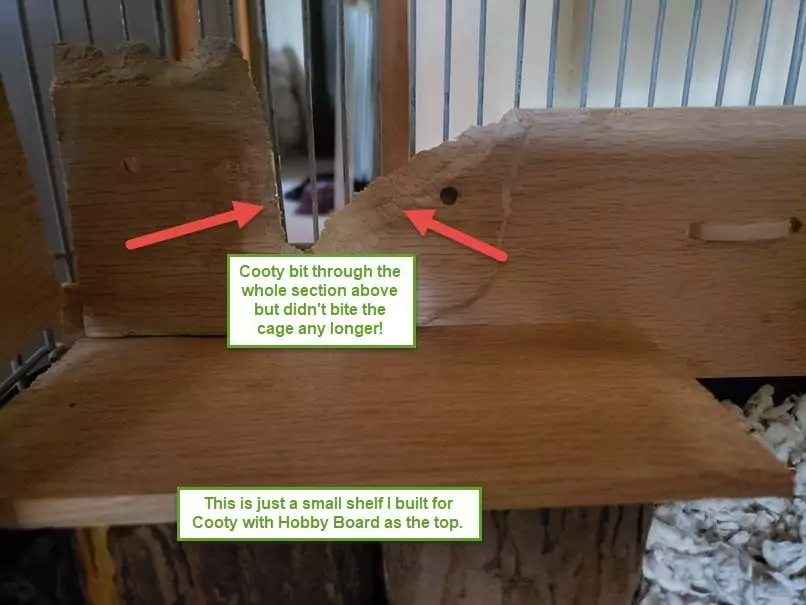
So, this is essentially the solution that I came up with for an alternative to bar biting. I find it interesting that even though Cooty bit her way through the wood and the metal cage was now exposed to her, she stuck with biting on the oak.
She since has stopped bar biting or bar chewing and she has various sections of the cage still not covered with wood.
YouTube Video of my Bar Biting Solution
Check out my video solution below. Click on the image below to watch it or here to view.
If you have any questions please ask in the comments below.
